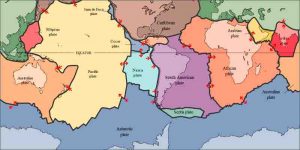
Scientists at The Australian National University (ANU) have found that independent estimates from geology and biology agree on the timing of the breakup of the Pangaea supercontinent into today’s continents.
When continents break up, single species are divided into two and drift apart – physically and genetically.
Lead researcher Sarah McIntyre said geologic dating of the continental drift and biological dating of the genetic drift provided independent estimates of the break-up dates over the past 180 million years.
“This is by far the most comprehensive comparison of genetic tree-based dates and the geological dates of the continental breakups,” said Ms McIntyre, a PhD scholar at the ANU Research School of Astronomy and Astrophysics.
“After excluding species that could easily move between continents, a new comparison of these two independent dating methods, applied to the breakup of Pangaea over the past 180 million years, finds good agreement between the two methods.
“Geological dating provides important independent support for the relatively new field of using genetic trees to date biological divergences.”
The research is published in Proceedings of the Royal Society B.
“In collaboration with biologist Professor Colin Groves, we came up with a vetting procedure that excluded species that could easily migrate from one continent to another,” Ms McIntyre said.
Co-author Associate Professor Charley Lineweaver said as genetic sequence data accumulates, dates from biology are becoming increasingly robust.
“Our original goal was to quantify how long continents had been isolated from each other, to see if some species would evolve into the hypothetical ‘intelligence niche’,” said Dr Lineweaver from the Research School of Astronomy and Astrophysics and the Research School of Earth Sciences at ANU.
“Along the way, we had to verify if geological and biological dating methods agree. We found that they do.”
“This concordance between biology and geology gives phylogenetic dating more street cred,” Dr Lineweaver said.
Dr Lineweaver said the result was only the tip of the iceberg of what can be done with all the new sequence data and the divergence dates that can be extracted.
Reference:
Sarah R. N. McIntyre et al, Global biogeography since Pangaea, Proceedings of the Royal Society B: Biological Sciences (2017). DOI: 10.1098/rspb.2017.0716
Note: The above post is reprinted from materials provided by Australian National University.










